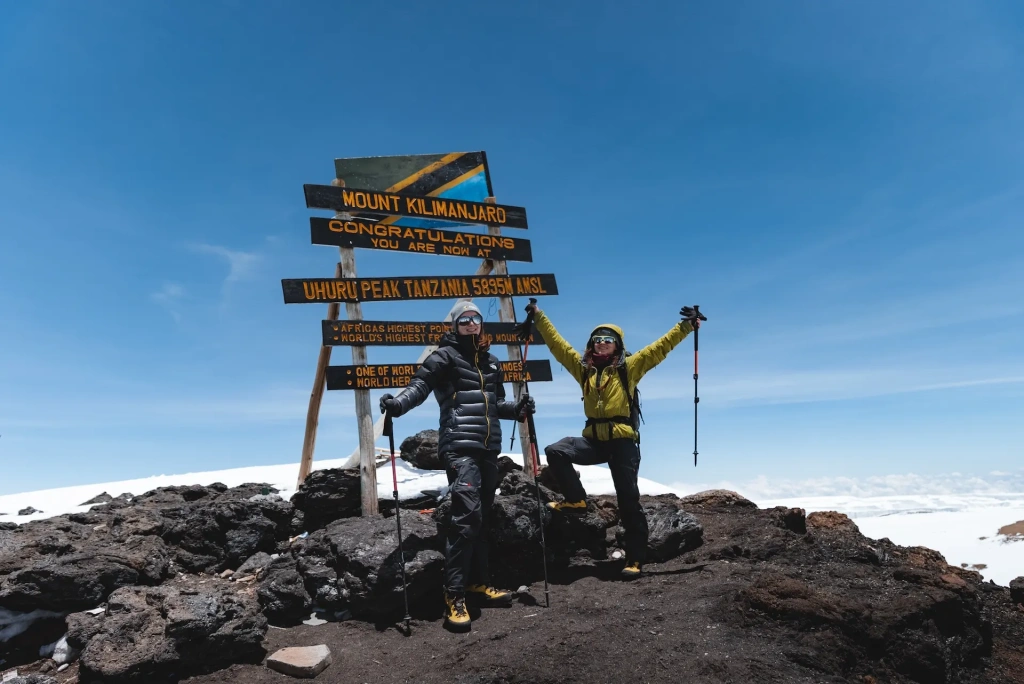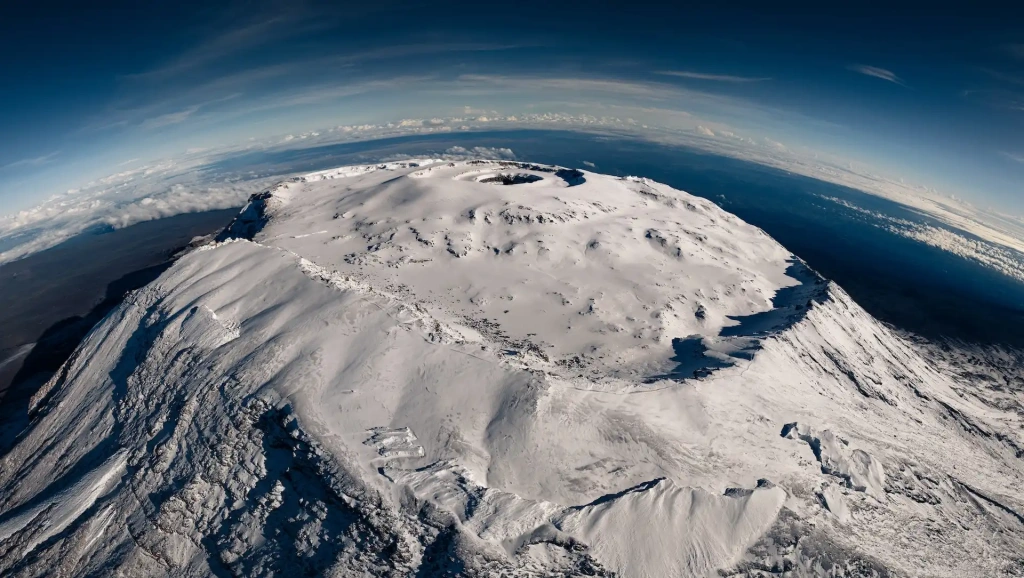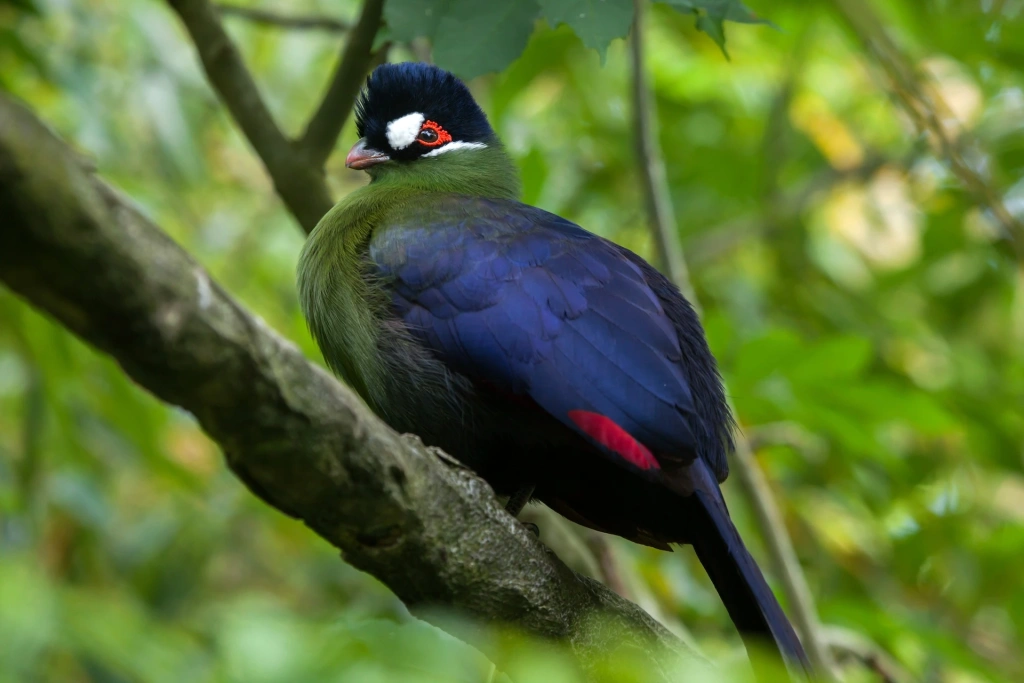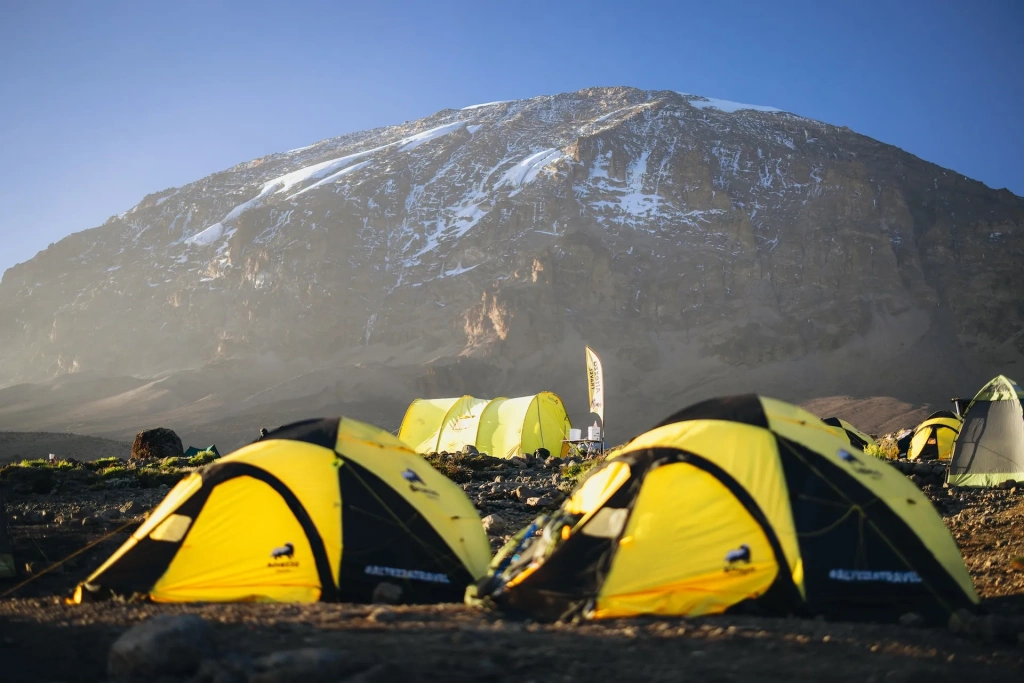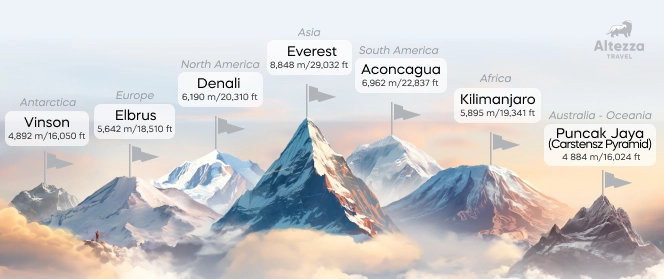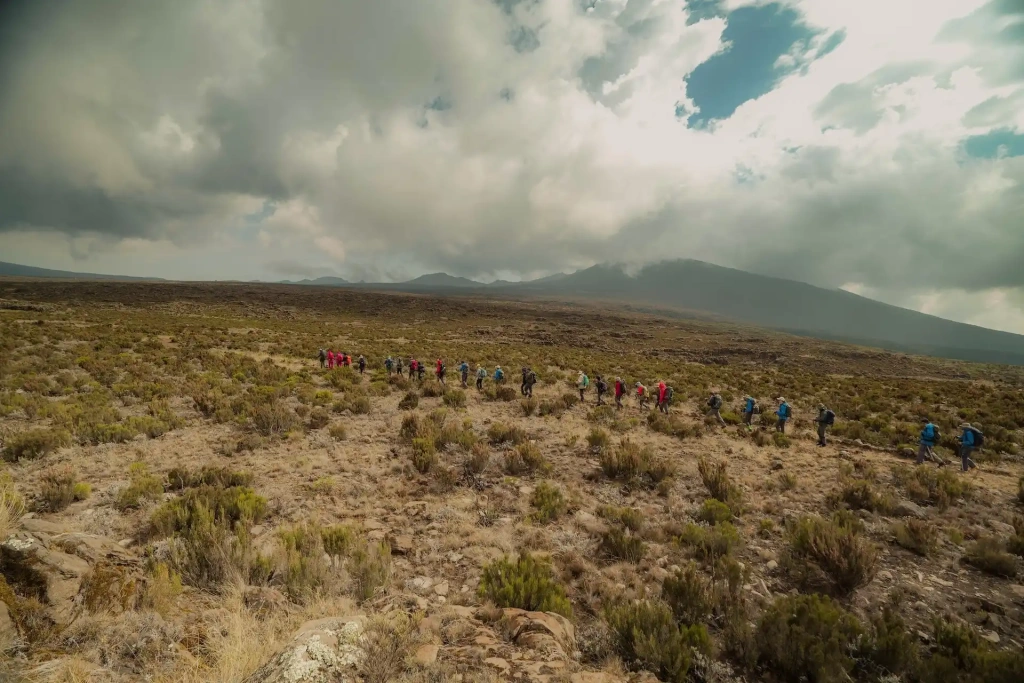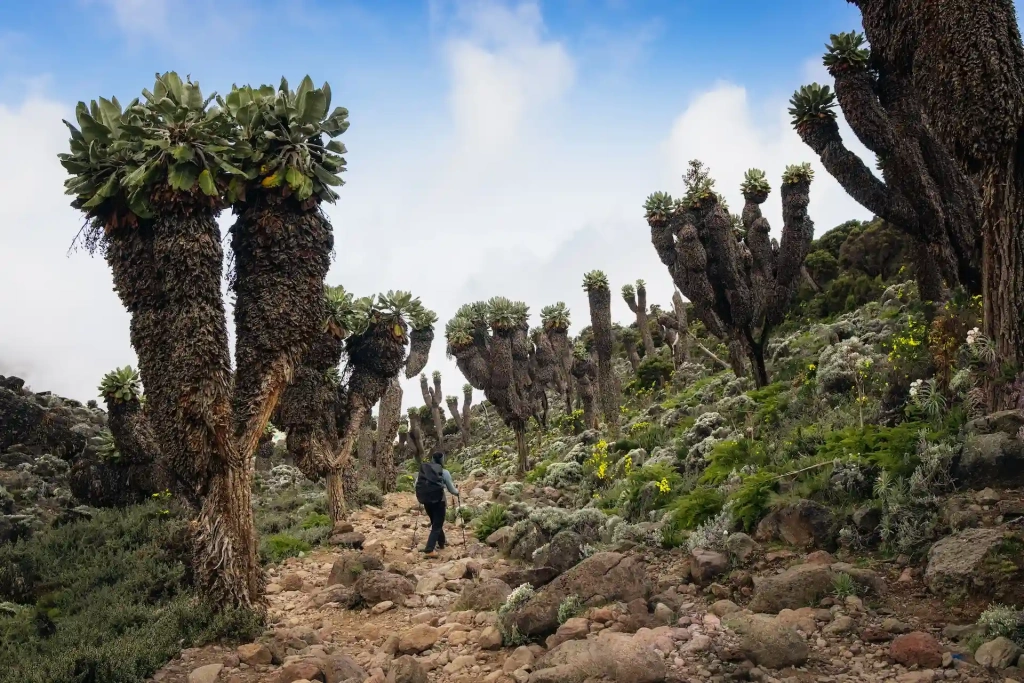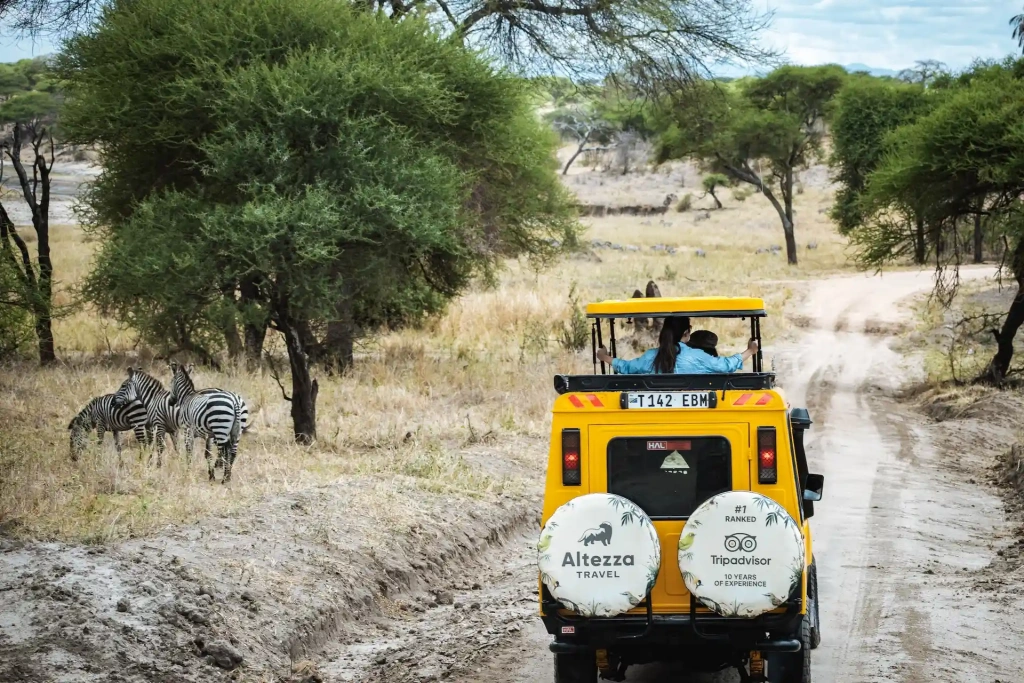Is reaching the summit of Kilimanjaro worth the energy, time, and money? If you ask us, the answer is a definite yes. We fell in love with Kilimanjaro on our very first expedition.
Ask travelers who have stood on the "Roof of Africa," and you’ll hear the same enthusiasm. One phrase comes up often: “It was a life-changing experience.” For many, climbing Kilimanjaro is not just an adventure but one of the most memorable journeys of their lives.
“What an adventure One of the best experiences you can have!!! Professionally run and the staff go above beyond for everyone Can’t thank Altezza enough”
Nick, Australia
Kilimanjaro is worth it if you love adventure
An expedition to the highest point of Africa is a slow and steady ascent above the clouds in a truly unique and beautiful place near the equator. Even more surprisingly, the adventure ends at the foot of magnificent glaciers sitting atop Kilimanjaro. Africa — and suddenly, there’s snow and glaciers! Yes, during , the mountain's dome is often covered in snow.
Snow and ice create a dramatic contrast with the dense tropical forest on the lower slopes, where the journey begins. The temperature at the base can reach 30 °C (86 °F), while at Uhuru Peak it can drop to -20 °C (-4 °F). If you’re climbing during the rainy season, you never know what adventures await at high altitude — a snowstorm, a white-capped summit, or dazzling sunshine.
Another type of adventure on Kilimanjaro is encountering wildlife. You never know who you’ll meet in the rainforest, on the Shira Plateau, or on the northern slopes. Kilimanjaro is home to buffaloes, jackals, large antelopes like eland and bushbucks, smaller forest antelopes like duikers, and many others. While seeing rare animals such as honey badgers or leopards is less likely, you’re almost guaranteed to see the stunning black-and-white colobus monkeys.
You might even be one of the lucky few to spot truly rare mountain dwellers: local shrews and mice, charming swamp rats (they’re surprisingly cute), chameleons, or agamas. And don’t forget to look up — trees are full of birds like Kilimanjaro white-eyes, sunbirds, thrushes, starlings, and more. If you’re lucky, you might even spot the spectacular Hartlaub’s turaco, which reveals its vivid crimson feathers when flying. Witnessing this is a small miracle.
It’s worth it if the mountains call to you
Climbing Kilimanjaro feels like a joyful reunion with the mountains. It offers all the timeless elements of a classic trekking adventure: backpacks slung over shoulders, rest stops with steaming thermoses, gradual ascents, nights in tents, hot tea in metal mugs, quiet evenings in folding chairs, cozy sleeping bags, crisp mountain air, and the deeply rewarding fatigue that comes after a long, challenging climb.
Even though Kilimanjaro isn't part of a vast mountain range but a freestanding peak, it still offers plenty of adventure. The mountain consists of three volcanic cones forming a single massif. A round-trip expedition typically takes about a week, providing ample time to experience the full spectrum of emotions that mountain adventures inspire.
It’s worth it if you’re aiming to conquer the Seven Summits
The Seven Summits are the highest mountains on each continent. For Africa, that’s Kilimanjaro, of course. So if you’re planning to check off all seven — Mont Blanc/Elbrus in Europe, Everest in Asia, Aconcagua in South America, Denali in North America, Puncak Jaya in Oceania, and Vinson in Antarctica — you can’t skip this one.
Climbing Kilimanjaro is worth it if you want to reach new heights (but Everest isn’t for you)
Sometimes we just want to push our limits or fulfill a lifelong ambition. For many, the ultimate goal is Everest — the highest challenge on Earth. But reaching its summit is incredibly difficult, expensive, and time-consuming. It also demands years of intense training and preparation.
Kilimanjaro, on the other hand, is far more accessible:
- You don’t need mountaineering experience — if you’re in good shape, you can do it
- It’s affordable — around $3,000, less than the majority of high-altitude treks
- The entire expedition takes about a week, or up to 10 days at most
By contrast, Everest requires years of preparation, specialized gear, around $80,000, and at least two months for the climb itself.
If you’re unsure about your physical ability, take a look at the climber statistics and records set on Kilimanjaro. For instance, the youngest known climber is 5-year-old Ognen Zivkovic, and the oldest is 89-year-old Anne Lorimor. Before her, the record was held by 86-year-old Angela Vorobeva, whose expedition was organized by Altezza Travel. Here’s what she said after returning from the summit:
“We spent about an hour at the top of Kilimanjaro. The beauty takes your breath away, it feels unreal. You know, I didn’t want to leave…
While traveling, you don’t just discover the world — you discover yourself and realize what you’re capable of.”
Angela Vorobeva
Mt Kilimanjaro is worth it if you love nature
Kilimanjaro is the tallest freestanding mountain in the world. There are no other mountains nearby, which means trekkers are treated to sweeping views of plains, hills, and lakes. Some say that if it’s the highest standalone mountain, then the view from the top must be the best in the world — and that seems fair.
The mountain itself is incredibly scenic. It’s one of the few places on Earth where you can pass through nearly every climate zone during one ascent. You start in green plantations with bananas and avocados, then move into a band of tropical rainforest stretching for about 1.5 km (0.9 mi) in vertical elevation gain. Next comes the afro-alpine meadows filled with strange and unique plants found only here. From there, you enter rocky moorlands where it often freezes at night.
You finish the climb in an arctic zone, where temperatures stay below freezing, snow frequently falls, blizzards are possible, and massive glaciers line the crater and its edges. And all of this — you’ll see in just a few days during one expedition. That alone makes Kilimanjaro worth the trip.
Each morning and evening, you’ll witness incredible sunrises and sunsets that stay etched in memory. Many travelers who’ve been there point this out.
«Fantastic tour- amazing landscapes - sunrises and sunsets - sometimes a hard climb - but it was worth the effort»
Morten M
On the mountain, you’ll also have a chance to see endemic plants unique to Kilimanjaro: giant groundsels (Dendrosenecio kilimanjari) and giant lobelias. Keep your eyes peeled and you might even spot the Kilimanjaro touch-me-not flower.
Another great reason to visit Kilimanjaro: you can combine the climb with a Tanzanian safari. This country is renowned for its pristine nature and wildlife, vast national parks, and rich biodiversity. Serengeti hosts Africa’s largest lion population and the famed Great Migration of wildebeests and zebras. The ancient Ngorongoro Crater is home to around 30,000 large animals packed into a small area. Imagine the unforgettable safaris in these places.
There are also other national parks and attractions near the mountain. Extending your Kilimanjaro itinerary to include them is a brilliant idea for a memorable African holiday.
It’s not worth it if…
Climbing Kilimanjaro isn’t for everyone. It’s not worth it if:
- You’re not physically or mentally ready for the expedition
- You don’t have at least one or two weeks available
- You value urban comforts and can’t imagine life in a tent, without a hot shower every day, in cold high-altitude conditions
- You can’t go a day without internet access
If any of these sound like you, it’s worth reconsidering and honestly asking whether Kilimanjaro is worth the inconvenience.
For everyone else, we invite you to join one of our group expeditions. An unforgettable Kilimanjaro adventure awaits — and it’s absolutely worth it.
All content on Altezza Travel is created with expert insights and thorough research, in line with our Editorial Policy.
Want to know more about Tanzania adventures?
Get in touch with our team! We've explored all the top destinations across Tanzania. Our Kilimanjaro-based adventure consultants are ready to share tips and help you plan your unforgettable journey.















